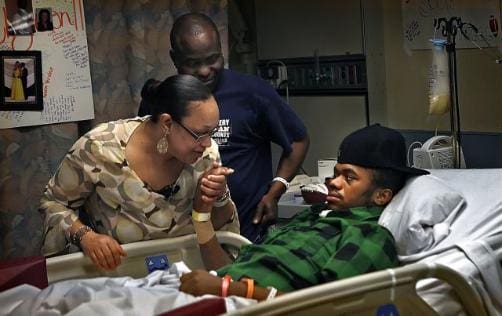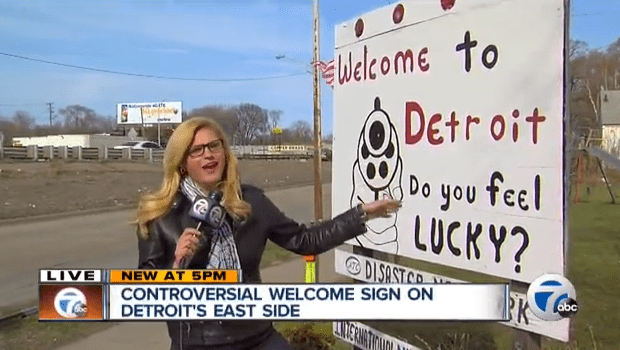I was going to blog today’s startribune.com’s story “Kids shooting kids” and call it good. I’ll pass the parse sauce in a mo, highlighting some pretty egregious statistical manipulation. But first, here’s a comment underneath the article arguing for gun control . . .
I grew up in the country. Every farm family had a rack of guns. All the kids grew up learning how to use them. That didn’t prevent accidents; I got a load of buckshot in the legs when I was 6, myself. Still, people used those guns to hunt food, and many people in the country were (and still are) poor enough that they depend on what they hunt for meat. They weren’t using the guns to posture and prove their toughness. Nobody is shooting kids or doing drive-by’s with a 30-06. Now I live in the inner city, and some friends wonder how I could do that with my wife and kids, without a gun. I say if I stored the weapon safely, and someone broke in to my 25′ x 45′ house, I’d have to make the guy a drink and some sandwiches while I unlocked the gun safe, took out the gun, unlocked the ammo safe in a different area, took out the ammo, loaded the gun, and got down to doin’ some defendin’ . . .
Not to mention that to effectively use a weapon in the real situation requires way more training than almost anyone I know (including cops) ever invests in. That’s why we have a professional military; because use of deadly force under control is almost impossible for humans. This culture is ridiculous and lethal. Sure, it’s the people not the guns, but we’re not talking about stray baseball bats killing kids a block away, or a knifing ricocheting through the wall of a house killing a kid, are we? Of course people kill people–and they do it with guns.
And sometimes they do it by accident.
Most of the teenagers gathered for the “Street Smart” class on a recent night at a south Minneapolis Boys and Girls Club knew what happened to Montrell Wade. They knew that the 16-year-old Washburn High football star got shot in the face by some other teens apparently playing with a gun.
Note “apparently.” That’s a pretty big “apparently,” given that this entire article is based on firearms accidents. But that’s now the mainstream media rolls when it comes to guns: they sacrifice factual accuracy for the sake of . . . what? Sensation? Pro-gun control paganda? Saving “just one life?” All of the above, probably.
A fascination with firearms and a false sense of security around guns has fueled more than 1,550 unintentional shootings of young Minnesotans between 1999 and 2008, a Star Tribune analysis of state Health Department data found. What’s more, unintentional shootings of young people is a statewide problem, not just an urban phenomenon. Each year, accidental shootings break down in roughly equal numbers between the seven-county metro area and the state’s other 80, mostly rural counties.
In 2008, the latest year for which data are available, more Minnesotans ages 10 to 19 were shot accidentally than were shot on purpose.
The Star Tribune also found that in 2008, Minnesota children ages 10 to 14 had a greater chance of being accidentally wounded by firearms than being hit by cars.
Experts say these accidental shootings, which resulted in emergency room treatment, hospitalizations and a few deaths, are almost all avoidable. Unlike criminal assaults, victims and perpetrators of accidental shootings usually have the time to make choices that would keep everyone safe.
Even if we take these stats at face value—which I most certainly don’t—comparing accidental shootings to intentional shootings is a classic example of misdirection. And what’s this about getting hit by a car? Emotionally, it resonates. Statistically, it obfuscates. Try these 2008 Minnesota car crash stats [via minnesotansforsafedriving.com] instead:
Traffic crashes are the leading cause of death to young people. 154 people (33%) under age 25 died in crashes. 26 under age 15 died, 75 age 15 – 20 and 53 ages 21 – 24 died. 15 to 19 year olds represent 6.8% of the licensed drivers and over 12.4% of the fatal crashes.
Compare that to the unspecified money shot in the “Kids shooting kids” article: “a few deaths.” How many would that be exactly?
There are good solid reasons why society should create sensible controls on the sale, use and storage of firearms. I don’t agree with most of them—schooled as I am in the Law of Unintended Consequences—but I respect the people who try to balance self-defense with public safety. Journalists who bend the facts to promote an anti-gun agenda are worthy of little save contempt. They do nothing to protect measured debate, and much to destroy it.




